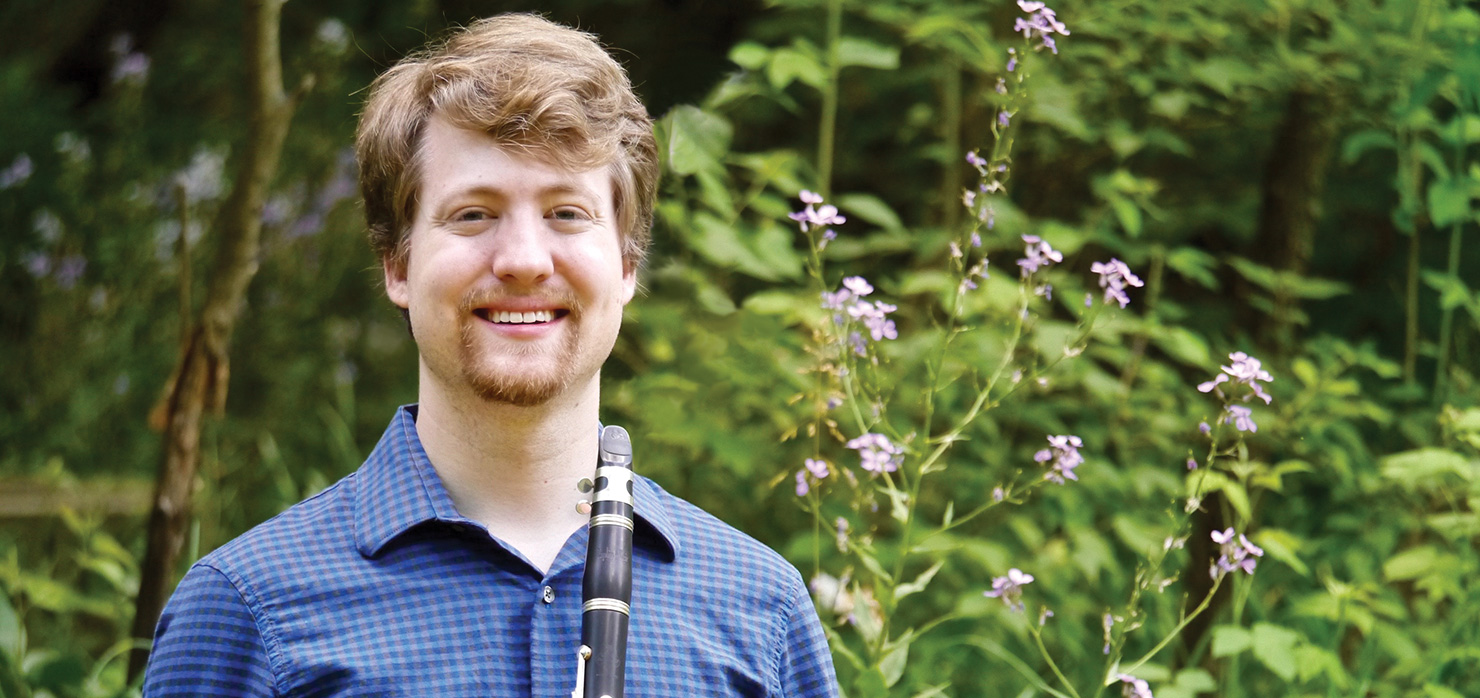COMPOSITIONS
Published Works:
Glass Dances (2011), For two clarinets or two alto saxophones
Glass Dances, as a project, initially attempted to combine certain elements of Philip Glass’s music with the driving force of dance music. However, what the final product ended up being was 90% dance and 10% Glass. Both melodically and rhythmically driven, Glass Dances features multiple themes and sections that reoccur in a quasi-rondo format; however, no forward motion is lost at these transitions. If you have two players looking for a fun challenge, Glass Dances is a catchy audience-thriller with the occasional minimalistic and ethnic undertones.
Purchase at Potenza Music:
Clarinet Quartet No. 1 (2011), for three clarinets and bass clarinet
This programmatic piece was inspired by a work of fiction centering on a character’s travels from Ireland to America, in which the main character leaves a place of comfort, arrives at a place of chaos, then finds comfort in that chaos.
1. On Raghtin More: Raghtin More is a mountain in northern Ireland which represents everything that the central figure of the story desires. Simplicity, tranquility, silence. However, in this instance, this perfect setting is merely a dream, which ends up being clouded by images of past inner-turmoil and negative experiences. The movement ends with the main character waking up, realizing he is on a flight to America, where he fears he won’t be able to experience the silence he once felt.
2. In New Jersey: the character finds himself thrust into a startling and completely foreign situation. The sounds of angry car horns and the chaos of rushing people are all new to him, and he has major issues trying to adjust. Coupled with frequent reminders of past memories, the character falls into a downward spiral that can only be terminated through the love and guidance of others.
3. And One With Me: In this movement, the character finds peace within himself, even though he is still confronted by chaos and negative thoughts. This movement is also reminiscent of a love song: either in the context of romantic love, as well as spiritual love and love of the self.
Love Like Windnoise for Clarinet Choir
Love Like Windnoise is loosely inspired by select Morton Feldman compositions, featuring minimalistic and repetitive tendencies. The title is a literary reference to a novel that deals with seeking silence, wholeness, and the nature of truth, especially as it is applied to relationships. The piece is designed to alternate between silence and tension, using dissonance and polyrhythm to create that juxtaposition. It’s structure is based on a circadian progression–starting at dawn, then growing warmer and more active, then finally returning to nighttime, except now bearing the feeling of fulfillment and internal peace.
Arrangements
Festive Overture, Op. 96, Dmitri Shostakovich, arr. Eddie Sundra
Dmitri Shostakovich’s Festive Overture is a staple in the orchestral literature, and has since been arranged and rearranged for everything from wind ensemble to brass ensemble and beyond. Written in 1954 in a span of just 3 days, this upbeat, joyous piece was conducted by the composer himself for the Bolshoi Theatre’s 37th anniversary of the 1917 Revolution. It features strong melodic themes, plenty of technical flamboyance, and a thrilling finish, making it a perfect candidate for opening or closing a program.
For the purpose of fitting the needs of various clarinet choirs, Bass Clarinet 2 doubles Alto Clarinet, and Contrabass doubles Contra-alto Clarinet. It is recommended that there be at least two clarinets per part, aside from Eb clarinet and Contra-alto/bass, though feel free to adjust accordingly based on strength and size of the ensemble.
For the sax choir version: A minimum of two players are required for all Alto and Tenor Saxophone parts. The Sopranino and Bass Saxophone Parts are optional but recommended. Feel free to transpose octaves based on the ensemble’s needs and abilities.
Note: the clarinet and sax choir versions can be combined.

